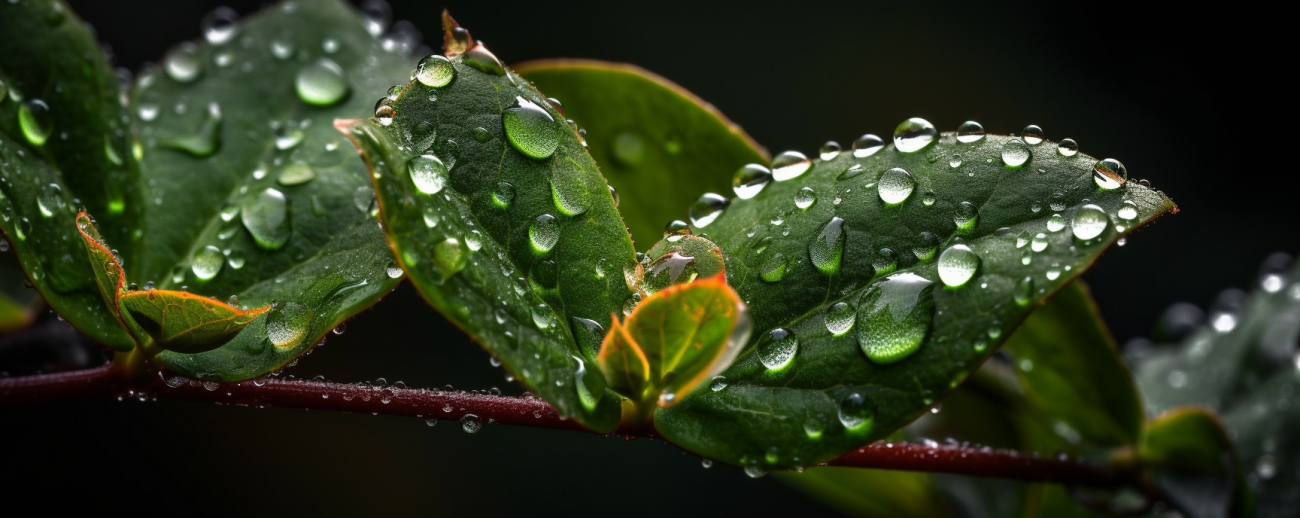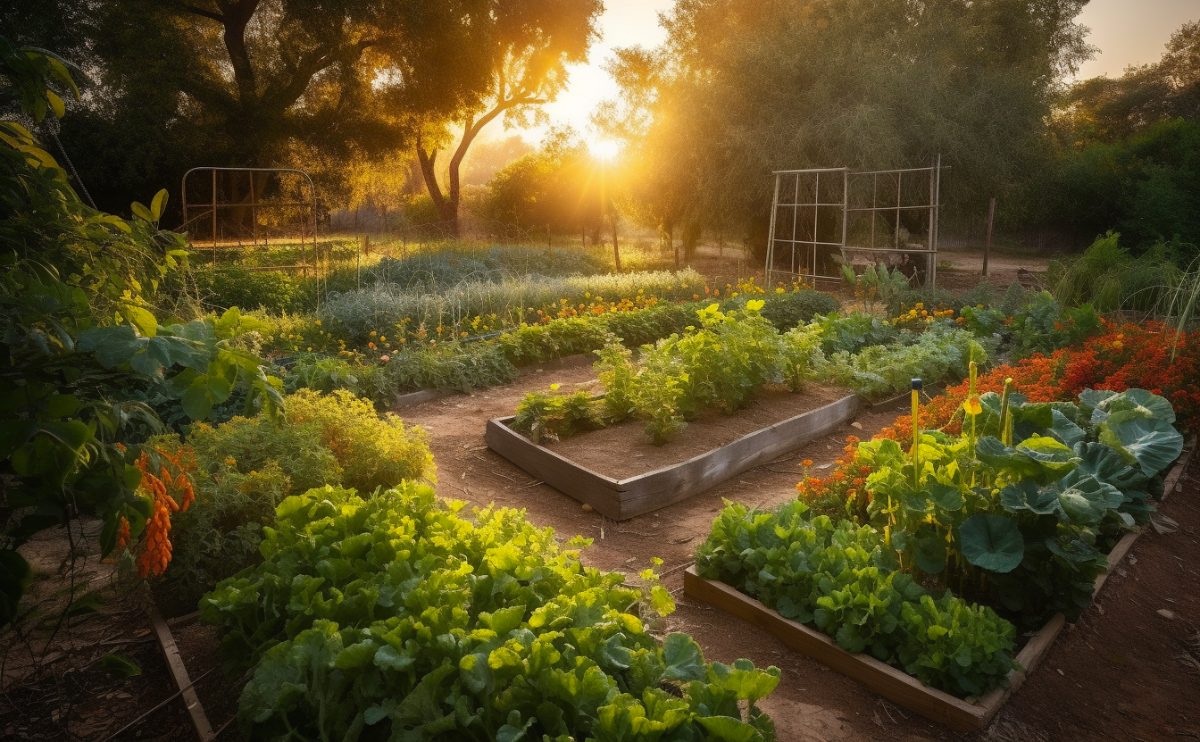Creating a drought-tolerant garden is a rewarding endeavor that allows you to cultivate a lush oasis even in arid climates. By harnessing the power of heirloom seeds and employing water-saving techniques, you can grow a thriving garden while conserving this precious resource. In this comprehensive guide, we will explore the steps and strategies to transform your outdoor space into a flourishing haven, brimming with vibrant vegetables and aromatic herbs.
Navigating This Article:
Creating a Drought-Tolerant Garden
Drought-tolerant gardens are designed to withstand long periods of dry weather without compromising the health and vitality of plants. With the right selection of plants and mindful gardening practices, you can minimize water usage while maximizing yield and beauty.
Selecting the Right Seeds: Heirloom Seeds for Success
When embarking on your drought-tolerant garden journey, it is essential to choose the right seeds. Heirloom seeds, renowned for their genetic diversity and adaptability, are an excellent choice. These seeds have been passed down through generations, ensuring the preservation of unique plant characteristics. By selecting heirloom seeds, you can nurture a resilient garden that can withstand the challenges posed by water scarcity.
In your quest to create a thriving drought-tolerant garden, choosing the right seeds is crucial. At FarmerValley, we specialize in providing exclusively heirloom seeds, renowned for their adaptability and genetic diversity. Our commitment to preserving unique plant characteristics ensures that your garden will be resilient in the face of water scarcity.
Heirloom seeds have a storied legacy, passed down through generations of dedicated gardeners. By selecting our heirloom seeds, you not only cultivate a garden but also continue the tradition of preserving plant diversity. Explore our extensive collection of vegetables, herbs, and flowers to unlock a world of extraordinary gardening possibilities.
Embracing Non-GMO Seeds: A Natural Choice
In your quest for a drought-tolerant garden, opting for non-GMO seeds is a crucial step. Non-GMO (Genetically Modified Organism) seeds are free from genetic modifications and alterations. By using non-GMO seeds, you support the preservation of natural genetic diversity while ensuring the integrity of your garden. These seeds are also more likely to adapt to their environment, making them ideal for a water-scarce garden.
Water-Saving Techniques: Nurturing Your Garden Efficiently
Creating a drought-tolerant garden requires implementing water-saving techniques that reduce wastage and promote efficient irrigation. By adopting the following strategies, you can conserve water while maintaining a thriving garden:
Mulching: Guarding Against Moisture Loss
Mulching is a practice that involves placing a protective layer of organic material, such as wood chips or straw, around the base of plants. This layer acts as a barrier, reducing evaporation and preventing moisture loss from the soil. Additionally, mulching helps suppress weed growth, which can compete with your plants for water and nutrients.
Drip Irrigation: Precision Watering
Drip irrigation is a highly efficient method of watering plants, delivering water directly to the root zone. Unlike traditional sprinkler systems, which can lose water to evaporation and wind, drip irrigation ensures minimal wastage. By using this method, you can provide your plants with the water they need while minimizing water loss.
Rainwater Harvesting: Utilizing Nature’s Gift
Rainwater harvesting is a sustainable practice that involves collecting and storing rainwater for later use in the garden. By installing a rain barrel or a rainwater harvesting system, you can harness the power of nature to water your plants during dry spells. This approach not only conserves water but also reduces your reliance on other water sources.

Top 10 Drought-Tolerant Vegetable and Herb Plants for the USA
When creating a drought-tolerant garden in the USA, it’s essential to choose plants that can thrive in the specific climatic conditions of the region. Here are the top 10 drought-tolerant vegetable and herb plants commonly used in the USA:
- Tomatoes – Varieties like ‘Roma’ and ‘Sun Gold’ are known for their ability to tolerate drought conditions while still producing flavorful fruits.
- Peppers – Both hot and sweet pepper varieties, such as ‘Jalapeno’ and ‘California Wonder,’ are well-suited for water-scarce environments.
- Zucchini – This summer squash is not only delicious but also highly adaptable to drought conditions. Varieties like ‘Black Beauty’ and ‘Costata Romanesco’ are popular choices.
- Eggplant – Drought-tolerant eggplant varieties like ‘Black Beauty’ and ‘Ichiban’ can withstand dry spells while producing abundant fruits.
- Beans – Several bean varieties are known for their drought resistance, including ‘Black Turtle Beans’ and ‘Blue Lake Bush Beans.’
- Rosemary – This aromatic herb is not only drought-tolerant but also adds a delightful flavor to dishes. ‘Tuscan Blue’ and ‘Arp’ are popular rosemary varieties.
- Thyme – Thyme is a versatile herb that can thrive in dry conditions. ‘English Thyme’ and ‘French Thyme’ are common choices for drought-tolerant gardens.
- Lavender – Known for its beautiful flowers and soothing fragrance, lavender is an excellent choice for a water-wise garden. Varieties like ‘Hidcote’ and ‘Munstead’ are popular in the USA.
- Sage – Sage is a hardy herb that can tolerate dry conditions. Varieties like ‘Common Sage’ and ‘Pineapple Sage’ are well-suited for drought-tolerant gardens.
- Oregano – This flavorful herb thrives in sunny and dry environments. ‘Greek Oregano’ and ‘Italian Oregano’ are commonly used in both culinary and ornamental gardens.
By incorporating these drought-tolerant vegetable and herb plants into your garden, you can enjoy a thriving oasis of flavor and aroma while conserving water.
Remember to adapt the planting and care techniques to the specific needs of each plant, ensuring they receive adequate water during their establishment period and gradually reducing watering as they become more resilient to drought conditions.

FAQs about Creating a Drought-Tolerant Garden
1. Can I use any type of seeds for a drought-tolerant garden?
While it is possible to use various types of seeds, heirloom seeds are highly recommended for their adaptability and resilience in water-scarce
conditions. Their genetic diversity and ability to thrive in challenging environments make them an excellent choice for a drought-tolerant garden.
2. Are non-GMO seeds better for a drought-tolerant garden?
Yes, non-GMO seeds are a better option for a drought-tolerant garden. Genetically modified seeds may have certain traits engineered for specific conditions, but they may not necessarily possess the adaptability and resilience required to withstand water scarcity. Non-GMO seeds, on the other hand, maintain their natural genetic diversity, making them more adaptable to changing environmental conditions, including drought.
3. How often should I water my drought-tolerant garden?
Although drought-tolerant plants require less water than traditional garden plants, they still need regular watering, especially during their initial growth stages. Once established, these plants can withstand longer periods without water. It is essential to monitor the moisture level of the soil and water accordingly. Generally, deep, infrequent watering is recommended to encourage deep root growth and enhance water retention in the soil.
4. Can I grow vegetables in a drought-tolerant garden?
Absolutely! Many vegetables can thrive in a drought-tolerant garden. Some drought-tolerant vegetable options include tomatoes, peppers, zucchini, eggplant, and various types of beans. It’s important to choose varieties that are known for their resilience and adaptability to water-scarce conditions. By selecting the right vegetables and implementing water-saving techniques, you can enjoy a bountiful harvest even in dry climates.
5. Are there herbs that can thrive in a drought-tolerant garden?
Yes, there are several herbs that are well-suited for a drought-tolerant garden. Some popular choices include rosemary, thyme, lavender, sage, and oregano. These herbs are known for their ability to tolerate dry conditions and can add both culinary and aromatic delights to your garden. When selecting herbs for a drought-tolerant garden, look for varieties that have a reputation for being drought-resistant.
6. How can I improve the soil’s water retention in my garden?
Improving the soil’s water retention is crucial for a drought-tolerant garden. One effective method is to amend the soil with organic matter such as compost or well-rotted manure. This organic matter improves the soil’s structure, allowing it to retain moisture more effectively. Additionally, adding a layer of mulch to the soil surface helps prevent evaporation and keeps the soil moist for longer periods.
Conclusion: Nurturing Resilient Gardens
Creating a drought-tolerant garden is an opportunity to cultivate a sustainable and thriving outdoor space, even in water-scarce regions of the USA. By selecting the right heirloom seeds and incorporating drought-tolerant vegetable and herb plants, you can embrace a more eco-friendly approach to gardening while enjoying a bountiful harvest and vibrant, aromatic displays.
Remember to implement water-saving techniques, such as mulching, drip irrigation, and rainwater harvesting, to further minimize water usage and maximize the resilience of your garden. With careful planning, nurturing, and a little help from nature, your drought-tolerant garden will flourish and provide you with a beautiful and sustainable oasis.
Detailed Guides for Planting Vegetables, Herbs, Greens & Lettuce, Peppers, and Wildflowers:
At FarmerValley we offer detailed guides for planting vegetables, herbs, greens & lettuce, peppers, and wildflowers. These guides provide step-by-step instructions for planting and caring for your plants, as well as tips for getting the best results. Check our growing guides and plant your own non-GMO garden with confidence.
Planting non-GMO seeds is a great way to enjoy fresh and healthy vegetables and herbs while also knowing that you’re avoiding harmful additives. With these essential tips and top lists, as well as our detailed guides, you’ll be on your way to a bountiful harvest in no time.

